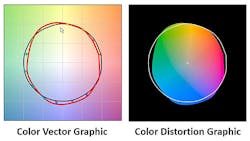Lighting Manufacturers May Have Most to Gain from New Color Rendition Measures
The introduction of a new way of measuring and understanding color rendition in lighting opens doors to better-informed design choices and better lighting overall. Benefits will accrue most to lighting manufacturers who embrace the new methods to help them differentiate existing products, develop new product enhancements and communicate with their marketing channels and end users.
This was part of the message from a webinar this week hosted by the U.S. Department of Energy (DOE) Energy Efficiency and Renewable Energy program and the Illuminating Engineering Society of North America (IES), presenting details of the new TM-30 color rendition measurements and comparing them with the historical measure of color fidelity, the International Commission on Illumination (CIE) Color Rendering Index (CRI).
Michael Royer, lighting engineer with Pacific Northwest National Laboratory, who chaired the task force that created the new TM-30, and Kevin Houser, a researcher from Penn State University and editor of the IES journal Leukos, put forth the reasons behind the new metrics in TM-30.
The IES task force, which included manufacturers, specifiers and researchers (representing the manufacturer side were individuals from Soraa, Cree and Philips), set out to improve on CRI by applying the latest lighting science to characterize aspects such as hue and saturation that are not captured by CRI’s fidelity metric. The TM-30 methods include a more detailed color fidelity measure based on 99 color samples (instead of CRI’s 8), but also incorporate a second set of measures called “gamut” that account for hue and saturation.
The task force defined graphical methods to communicate the color rendition of a light source compared with a reference luminant. The documentation for TM-30 includes an Excel spreadsheet with over 300 reference light sources. If TM-30 is embraced by the industry, those graphical depictions will become a fundamental part of describing and specifying lighting color performance. The result, said the presenters, will be more thorough specifications from designers and engineers, enhanced or tailored light sources developed by manufacturers.
Lighting manufacturers stand to gain the most from TM-30, Royer said. They will be able to use its methods not just to communicate and differentiate their products, but to develop new lighting products that enhance or tone-down particular parts of the spectrum for specific applications.
Another webinar detailing the math and science behind TM-30 is scheduled for Sept. 22. Details at energy.gov.
